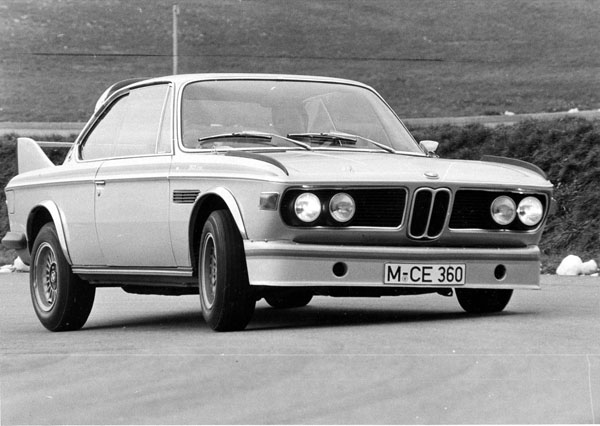
The CSL was a lightweight version of BMW’s flagship six-cylinder 2800/3.0 CS coupes, although the shape harks back to the 1965 2000 CS. It was built especially to allow the car to meet the requirements needed for European Touring Car Group 2 racing.
The first CSLs, announced in May 1971, were specially modified so as to become 217km/h road racers with thinner body panels, no front bumper, fibreglass rear bumper, racing latches on the bonnet, manual winding side windows made from plexiglas, and of course the alloy-skinned opening panels, all in the name of weight reduction.
BMW even skimped on underbody rust protection and sound deadening, along with some drastically cheaper interior trim enabling 181kg to be pared off the coupe. Although top speed wasn’t much affected, acceleration was decisively quicker. To stiffen suspension Bilstein gas shock absorbers with advanced progressive-rate springs were added. As a result, the CSL had sure-footed, almost roll-free handling, though oversteer could be a problem in the wet.
Wheels were fat Alpina 17.8cm alloys with chrome wheel-arch extensions to keep them legal. Black accent stripes distinguished the L’ – which stood for lightweight – from the standard CS/CSi. One hundred and sixty-nine were built, all left-hand drive.
Although the CSL was originally fitted with the 2958cc carburettor version of the in-line six (giving 135kW), a slight bore increase in August 1972 lifted capacity to 3003cc, allowing the car to slip into three-litre Group 2 competition. At the same time Bosch electronic injection replaced the twin Zenith carburettor and power rose to 150kW, although brochures of the time quote a carburettor-fed 3003cc engine as well. Five hundred and thirty-nine were built.
The British specification RHD car was introduced in the UK in October 1972 and came with the RHD City package’ to appease drivers who wanted the lightweight racer cachet without the discomfort. Most of the excess weight previously stripped off the car was put back. British importers took 500 CSLs but prices were high – more than an Aston or Jensen – and not everybody liked the awkward to get into Scheel bucket seats, or wanted easily-damaged alloy panels.
The 3.2-litre CSL was announced in August 1973. It was left-hand drive only and had a bigger 3153cc, 154kW engine although it was still badged 3.00-litre. The same lightweight shell was used, but to take the weight and downforce of the rear wing, the bootlid was steel with a fitting for the spoiler. To use the wing on the track it had to be homologated on a production car. These also included a deep front spoiler, a roof hoop spoiler just above the rear window, a small lip spoiler on the edge of the bootlid and rubber spitters’ on the front wings.
Manual steering and Bilstein gas-pressure shock absorbers with three alternative levels of hardness meant the 3.2-litre CSL didn’t need an anti-roll bar. The last CSLs, built in 1974-75, had minor differences such us a three-fin rear batwing and a driver’s seat with an adjustable backrest.